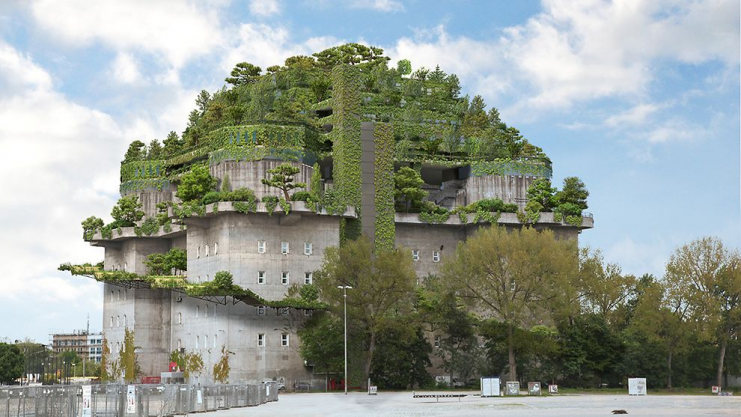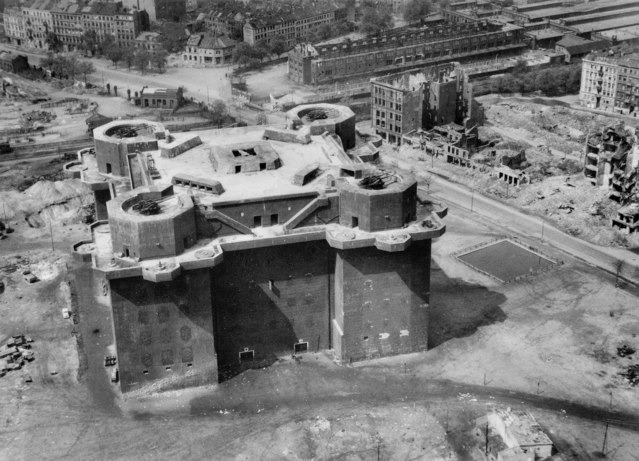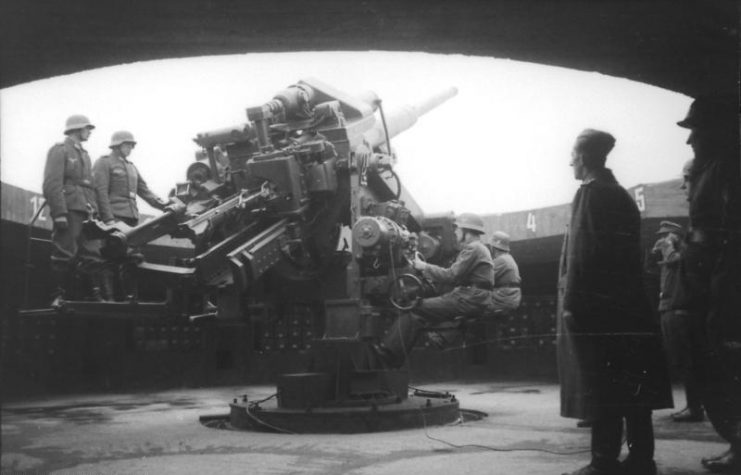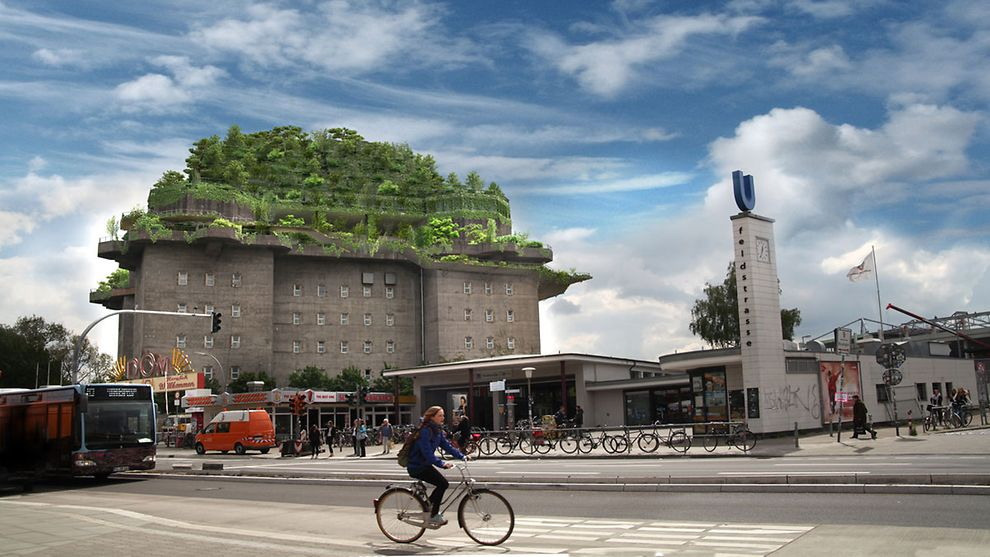The St. Pauli bunker in Hamburg, Germany, is set for a hotel makeover.
The bunker was built in World War II to provide air defense and to provide shelter for up 30,000 residents. It is one of two towers built for that purpose. It was built in only 300 days using more than 1,000 forced laborers from concentration camps. Anti-aircraft weapons on the roof were used to repel air raids.
In 2021, the bunker will reopen as a new luxury hotel. NH Hotel Group are the developers after being awarded the contract.
The complex will contain 136 rooms, bar, coffee shop, and a restaurant. There will also be spaces for culture, exhibitions and a hall for sports and entertainment events.
The roof of the tower will hold a public park which will provide more space for exhibitions as well as a memorial for the victims of the Third Reich.

Maarten Markus, the Managing Director Northern Europe of the NH Hotel Group, said that he is proud that the company can begin building their new hotel in the bunker. He said that the company is aware of the history of the building and the significance it holds for the city of Hamburg.
Paul Hahnert, Managing Director EHP and Project Manager, said that it is representative of the hotel design in that it respects the history while pointing toward a more hopeful future.
Called a Hochbunker (which translates literally to “high bunker”) is located on Feldstrasse in Hamburg and dominates the town’s skyline. It was built in response to the Allied air raids on Berlin. The Third Reich decreed that cities must build air raid shelters. Hamburg was a likely place to receive a bunker due to it’s importance to the U-boat and oil industries.

When the war ended, Hamburg actually had over one thousand bunkers, the most of all German cities. 650 of the bunkers are still around today, though few are as distinct and noticeable as the St. Pauli bunker.
Originally named Flakturm IV (“flak tower IV”), it is one of the largest such bunkers ever built. It is 75 meters by 75 meters in width and 35 meters tall. The walls are 3.5 meters thick.
Designed to accommodate 18,000 people, at least 25,000 crowded in during the air raids in the summer of 1943. It served its secondary purpose of protecting people but failed at its primary purpose of shooting down Allied planes with missiles. The Allies defeated the missile tracking system by dropping strips of tin foil as they flew overhead.
When the war ended, it was decided not to demolish the bunker as the amount of explosives necessary to do the job would have destroyed the adjacent neighborhoods along with the bunker.

The thick walls make the bunker perfect for businesses that are particularly loud. The top floor currently houses a nightclub which hosts electronic music acts. The ground floor has a large music store. A pop music school does business from within the bunker and several artists, actors, and musicians have offices in the building.
Project Hilldegarden is a project by the citizens of St. Pauli and architects. It envisions a garden that begins at the next U3-station and extends all the way to the roof of the bunker.
Another Article From Us: Map Plots 30,000 Luftwaffe Air Raids on The UK During WW2
The park will be a total of 8,250 square meters and have room for urban gardening, venues and cafés.
